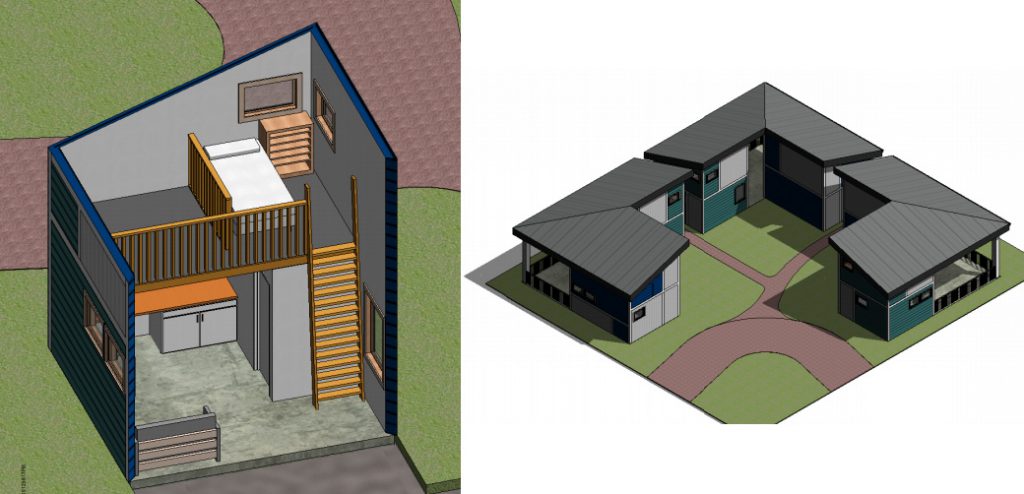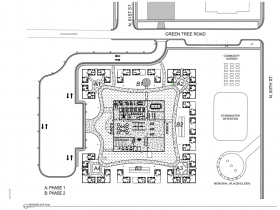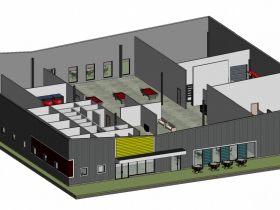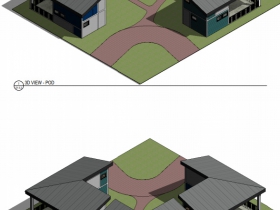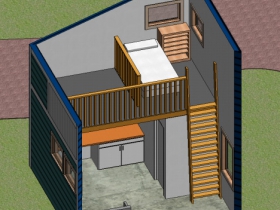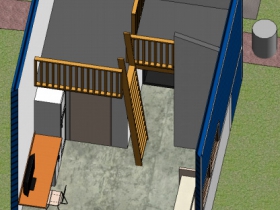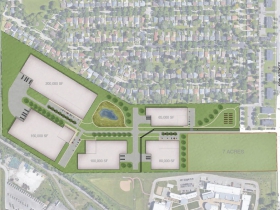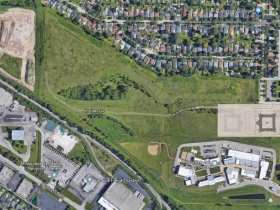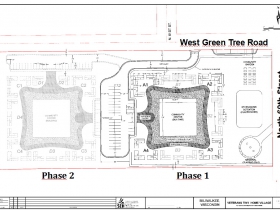Tiny Homes Village Design Approved
Council committee approves design for 48-home village for veterans.
Veterans Outreach of Wisconsin‘s proposed tiny home village for homeless veterans received design approval Tuesday morning, the last major step before construction would begin next spring.
The $2 million development, which is based on another facility VoW operates in Racine, would provide support services in a sober-living environment for military veterans that are homeless or facing homelessness. A total of 48 homes, ranging from 172 square feet to 232 square feet in size would be built on a city-owned lot at 6767 N. 60th St.
“They’re small, they’re great, but they’re not big enough for them to want to stay forever,” said VoW executive director Jeff Gustin in September when the citizen-led City Plan Commission reviewed the design.
A zoning change for the project was before the Common Council’s Zoning, Neighborhoods & Development Committee Tuesday. The Common Council approved selling the land for the project for $35,000 in September.
Brian Cooley, senior architect at SEH, walked the commission through the design, which includes pods of six homes surrounding the community center.
He said the designs are based on three design concepts: simplicity, the use of color and relationship with the community. Cooley told the committee that simplicity is important so the homes can be constructed on-site by members of the community, including the veterans. “Color can provide energy, vibrancy,” said Cooley. The relationship to the community is being embedded in the homes by copying design patterns from other developments. Cooley showed the committee the new Westlawn Gardens buildings, located 1.5 miles to the south, as a reference point.
Each cluster would include three accessible units, the bigger of the two floor plans, that comply with standards established in the Americans with Disabilities Act (ADA). This includes placing the bed on the ground as opposed to on a loft.
“Why wouldn’t they all be ADA accessible? That seems odd,” said Alderman Robert Bauman.
Cooley said the ADA unit allotment exceeds the code requirement. “To put an ADA toilet room in each unit takes up more space,” said the architect.
“Yeah. Okay. So?” responded Bauman. “That seems short sighted to me.” He noted that new construction of the Housing Authority of the City of Milwaukee includes the ability to convert every unit to ADA-compliance.
SEH project manager Gary Randle said that expanding the size of every unit would result in the design not being replicable. “The footprint was selected so we could invert it to the backside of the property,” said Randle. VoW intends to build the complex on 3.5 acres of the seven-acre site and could duplicate the design on the remainder of the campus.
Alderwoman Milele A. Coggs asked how the per-unit costs factored into the decision.
The SEH representatives said it is hard to calculate given the amount of donated time and materials, but Randle estimated that the ADA-compliant units would cost $40,000 to build, while the lofted units would come in at $30,000.
The Racine complex has 15 homes, of which three are ADA-compliant. “The three units in Racine have been proven to be enough,” said Gustin. He said from a mental standpoint it’s a “step backward” for a veteran to be placed into an accessible home if they don’t need a single-level layout.
The group hopes to start construction in Spring 2020. “We are shooting for the foundations to go in when the frost breaks,” said Randle.
A report from VoW says as many as 300 veterans are homeless in Milwaukee on any given night, a number that expands to 1,200 “3-4 times per year.” The report states that 20 percent of Milwaukee’s homeless population is believed to be made up of military veterans.
W. Green Tree Rd. would be extended west and utilities run into the site as part of the development, allowing the city to pursue the development of the rest of the site.
The committee unanimously approved the zoning change. The proposal must next be voted on by the full Common Council.
Renderings and Architectural Layout
Site Plans
If you think stories like this are important, become a member of Urban Milwaukee and help support real independent journalism. Plus you get some cool added benefits, all detailed here.
Eyes on Milwaukee
-
Church, Cupid Partner On Affordable Housing
 Dec 4th, 2023 by Jeramey Jannene
Dec 4th, 2023 by Jeramey Jannene
-
Downtown Building Sells For Nearly Twice Its Assessed Value
 Nov 12th, 2023 by Jeramey Jannene
Nov 12th, 2023 by Jeramey Jannene
-
Immigration Office Moving To 310W Building
 Oct 25th, 2023 by Jeramey Jannene
Oct 25th, 2023 by Jeramey Jannene


